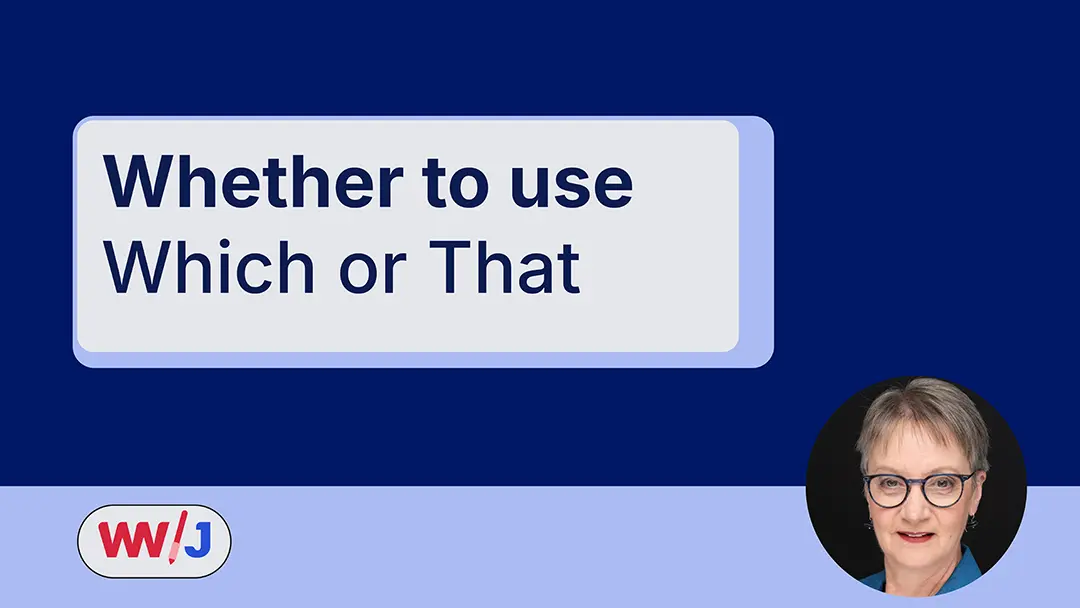Which vs That: The Essential Guide for Writers
When it comes to English grammar, few topics confuse writers more than the age-old debate of "which vs that." Both words are used as relative pronouns, but each serves a different grammatical purpose. Misusing them can lead to unclear or misleading sentences. If you've ever hesitated mid-sentence, unsure whether to use “which” or “that,” you’re not alone—and this guide is here to clear up that confusion once and for all.
Understanding Relative Pronouns in English Grammar
What Are Relative Pronouns?
Relative pronouns are words that connect a clause or phrase to a noun or pronoun. They help provide more information about that noun. Common relative pronouns include who, whom, whose, which, and that. In this guide, we focus exclusively on the correct usage of “which” and “that.”
Why Word Choice Matters: Precision and Clarity
Choosing between "which" and "that" isn’t just about grammar; it's about delivering clear and precise communication. The word you choose affects how your reader interprets your sentence. The wrong choice can change the meaning entirely.
The Core Rule: Restrictive vs Nonrestrictive Clauses
What Is a Restrictive Clause?
A restrictive clause limits or defines the noun it modifies. It’s essential to the meaning of the sentence.
Example:
- The book that has a red cover is mine.
This clause restricts the meaning to only the book with the red cover.
✅ Use “that” for restrictive clauses.
What Is a Nonrestrictive Clause?
A nonrestrictive clause adds extra information that isn’t essential to the main point. These clauses are usually set off with commas.
Example:
- The book, which has a red cover, is mine.
Here, the fact that the book has a red cover is extra information.
✅ Use “which” for nonrestrictive clauses.
Role of Commas in Identifying Clause Types
A simple trick: If the clause needs commas, use “which.” If it doesn’t, use “that.” Think of commas like parentheses—they indicate the information is optional or extra.
How to Use "That" Correctly
Guidelines and Examples of Restrictive Use
“That” is your go-to word when you're introducing information essential to the noun.
Examples:
- Cars that use electric power are environmentally friendly.
- People that work remotely often value flexibility.
Each clause is integral to the meaning.
Common Mistakes with "That"
A frequent error is using "that" where "which" is appropriate in nonrestrictive clauses. Avoid this!
Incorrect: My house that has a blue door is for sale.
Correct: My house, which has a blue door, is for sale. (If you have only one house.)
How to Use "Which" Correctly
Guidelines and Examples of Nonrestrictive Use
Use “which” when the clause adds non-essential information.
Examples:
- This novel, which was published in 1965, is still widely read today.
- Our meeting room, which faces the garden, is now booked.
The information following "which" is extra and doesn’t define the noun.
Comma Rules with "Which"
Always set off "which" clauses with commas unless you're writing in a dialect or style that allows restrictive use of "which" (e.g., British English or informal speech).
Exceptions and Grey Areas
When "Which" Can Be Restrictive
Though rare, "which" is occasionally used in restrictive clauses in British English or less formal contexts. However, most style guides recommend sticking with "that" for clarity.
Example:
The rules which apply to students must be followed.
This is acceptable in British usage but would be flagged in American academic writing.
Style Guide Recommendations
What the Chicago Manual of Style Says
Chicago strongly favors using “that” for restrictive and “which” for nonrestrictive clauses. It encourages clarity and avoids ambiguity.
What AP and MLA Recommend
- AP Style: Same as Chicago—“that” for restrictive, “which” for nonrestrictive.
- MLA Style: Consistent with the above. Accuracy and precision are key.
Practical Tips to Remember "Which vs That"
Mnemonics and Memory Tricks
- “Which is extra, that is essential.”
- Picture “which” in parentheses or commas.
- If removing the clause changes the meaning? Use “that.”
Editing and Proofreading Tips
- Read the sentence aloud. If it sounds like side information, try "which."
- Remove the clause. If the meaning remains, “which” is likely correct.
Frequently Asked Questions About "Which vs That"
1. Is it ever okay to use "which" in a restrictive clause?
Yes, in British English or informal contexts, but it's discouraged in American academic and professional writing.
2. Do style guides differ in their recommendations?
Slightly. Most American guides (Chicago, AP, MLA) insist on "that" for restrictive clauses and "which" for nonrestrictive.
3. Can I start a sentence with "which" or "that"?
Technically, yes. But it often leads to sentence fragments. Better to rephrase.
4. Is the rule the same for all nouns?
Yes. Whether you're talking about people, places, or things, the restrictive/nonrestrictive rule still applies.
5. Are commas always required before "which"?
Yes, when used nonrestrictively. That’s one way to spot it.
6. Is it wrong to use "that" too often?
It can be stylistically awkward, but it’s not grammatically wrong if used correctly.




